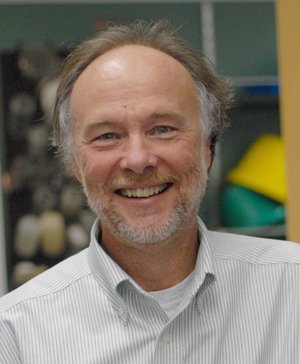Hageman Distinguished Lecturer in Agricultural Biochemistry
|
About the Speaker
Doug Rees had his first experience with electron transfer processes in microbes as an undergraduate studying cytochrome in Neurospora with Carolyn W. Slayman at Yale College where he completed his BS in Molecular Biophysics and Biochemistry in 1974. In 1980 he received a PhD in Biophysics, determining crystal structures of carboxypeptidase A with William Lipscomb at Harvard. While there he also became acquainted with multi-center electron-sharing bonds (e.g. in boranes). During a two year postdoctoral appointment at the University of Minnesota with James B. Howard, he successfully produced the first crystals of the nitrogenase iron protein from Azotobacter vinelandii. He has continued his work with several nitrogenases and has had a productive collaboration with Jim Howard for 35 years.
Professor Rees joined the faculty of the Department of Chemistry and Biochemistry at UCLA in 1982 and moved to Caltech in 1989. He is a member of the American Academy of Arts and Sciences and the National Academy of Sciences (since 2000). Dr. Rees is the Roscoe Gilkey Dickinson Professor of Chemistry at the Caltech, a Howard Hughes Medical Institute Investigator, and (since July 1, 2015) Dean of Graduate Studies at Caltech.
The Rees group has focused on structures and mechanisms of complex metalloproteins and integral membrane proteins, particularly those involved in ATP-dependent transduction processes, and known as ABC transporters. Of his 160 publications, 1/4 have dealt primarily with nitrogenase. This enzyme is a moving target and gives up its secrets very slowly. The closer you look the more surprises is yields. The unusual structures of the nitrogenase complex, and particularly its FeMo-cofactor, now solved at about one Ångstrom resolution, have revealed a hexa-coordinate carbon atom at the center and a sulfur atom that can undergo a reversible displacement to an alternative site. There is also a lone iron atom in between the FeMo-cofactor and another unusual Fe8-S7 cluster (the P cluster) which itself rearranges during enzyme function. There may be other surprises coming.
Doug Rees and collaborators have also studied the unrelated molybdopterin Mo-cofactor which participates in basic reactions of the biological nitrogen and sulfur cycles in archaea, bacteria and eukaryotes. Professor Rees’ many membrane protein studies have addressed the energy transduction processes associated with photosynthesis (bacterial reaction centers), mechanosensation, and transport. The current work on membrane proteins centers on bacterial mechanosensitive channels and ATP dependent bacterial transporters mediating translocation of transition metals and nutrients. This will be the topic of the colloquium Wednesday afternoon.
Currently the metalloprotein efforts focus on defining the molecular mechanism of nitrogenase. A key observation, many years ago, was that nitrogenase is a nucleotide-dependent molecular switch, using ATP hydrolysis to switch protein conformations, much as G proteins use GTP. Now details of the multistep process of reducing highly stable dinitrogen to ammonia, a six electron thermodynamically favorable reaction, are being defined. This will be the topic of the noontime Hageman lecture.
 Dr. Douglas C. Rees
Dr. Douglas C. Rees